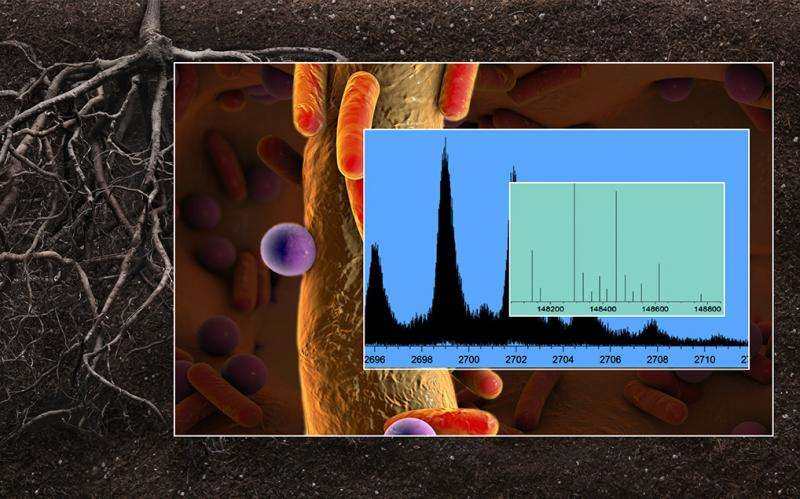Unraveling the molecular complexity of cellular machines and environmental processes

Studying the mixtures formed by molecular machines within cells, or the mixtures found in a groundwater plume demands powerful instruments. Scientists are using one of the world's most powerful 21-Tesla Fourier transform ion cyclotron resonance mass spectrometers (21T FTICR MS) to get answers. The instrument is at EMSL, the Environmental Molecular Sciences Laboratory, a U.S. Department of Energy Office of Science user facility. Two studies show the potential of the instrument. In one study, EMSL scientists created more than 8,000 molecular formula assignments from dissolved organic matter mixtures. In another, scientists rapidly identified and discovered new types of metal-binding molecules called siderophores, made by bacterial cells.
The instrument will let scientists from around the world tackle previously intractable questions about how mixtures of chemicals and other constituents interact, transform over time, and lead to larger scale phenomena and everyday challenges. These challenges include the behavior of cells in a bioreactor, the movement of contaminants in the subsurface, and the formation and transformation of aerosol particles that contribute to atmospheric pollutants.
As the highest performance mass spectrometry technique, the FTICR MS has become increasingly valuable in recent years for research applications. The FTICR MS determines the mass-to-charge ratio of ions by measuring the frequency at which ions rotate in a magnetic field, providing ultra-high resolution and mass measurement accuracy. The 21T FTICR MS, which is one of only two in the world with this high magnetic field strength, went online at EMSL in 2015. In a recent study, a team of EMSL scientists evaluated performance gains produced by this high magnetic field strength. They found this next-generation instrument empowers routine analysis of large intact proteins, precisely measures the fine structure of isotopes, and elicits more information than ever before from complex natural organic matter mixtures. The initial performance characterization of the 21T FTICR MS demonstrates enormous potential for future applications to extremely complex molecular mixtures and systems frequently encountered in environmental, biological, atmospheric, and energy research. Moreover, this unprecedented level of mass resolution and accuracy will help promote widespread use of top-down proteomics—an approach that enables accurate characterization of different protein variants with different biological activity.
As a result, this transformative instrument will enable users from around the world to tackle previously intractable questions related to atmospheric, terrestrial, and subsurface processes; microbial communities; biofuel development; and environmental remediation.
More information: Jared B. Shaw et al. 21 Tesla Fourier Transform Ion Cyclotron Resonance Mass Spectrometer Greatly Expands Mass Spectrometry Toolbox, Journal of The American Society for Mass Spectrometry (2016). DOI: 10.1007/s13361-016-1507-9
Provided by US Department of Energy




















